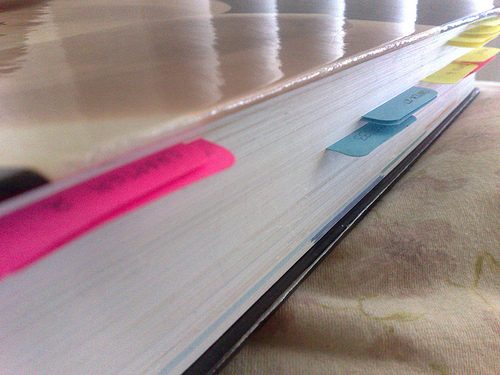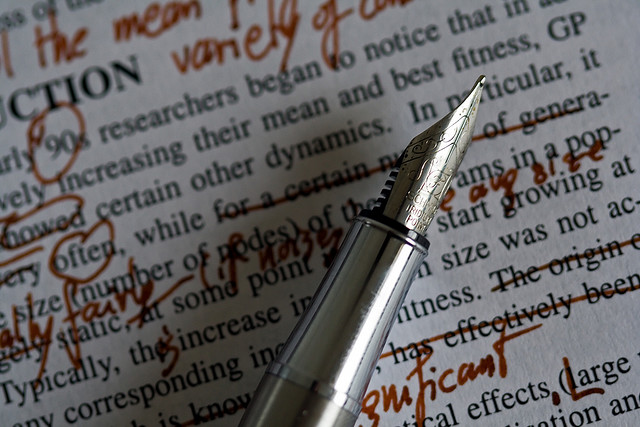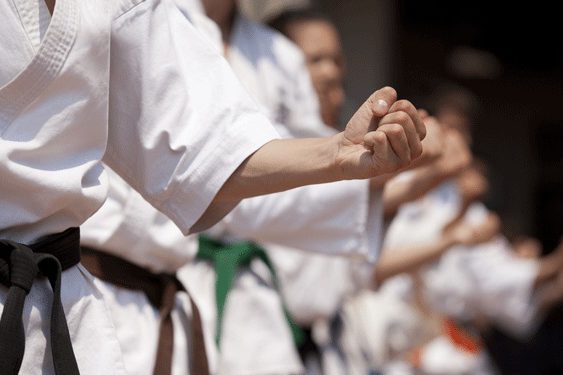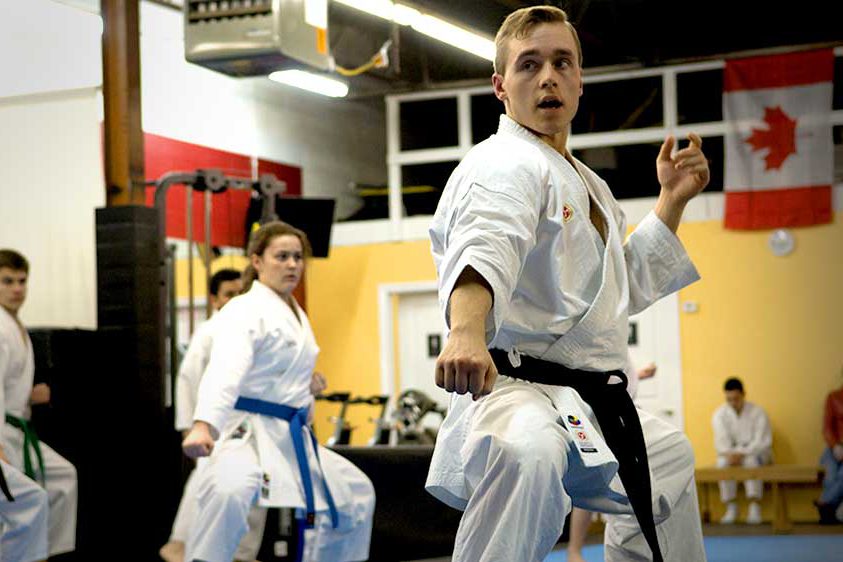Remember when you went to school?
I mean, like high school, college, university or whatever? If not, just pretend to remember, unless you want to feel totally left out the conversation for the rest of this article.
Chances are, when you studied, that you had a textbook.
That is, a book designated by your teacher specifically for this course, this subject, this class. Every test you were handed was based around the content of that specific textbook. And if it wasn’t, well, a proper post-test student rebellion ensured that it would be for the next test. (How dare they test us in something we haven’t had the interest in learning from another source?!).
Now, the funny thing about textbooks is that they aren’t really worth anything. Nope. Rather it’s the ideas in them that are worth something. People don’t care about books – people care about ideas. And the better job the author does in conveying a specific idea with her book (as approved by the teacher, or principal, or board of education), the better the textbook is considered to be.
So here’s where it becomes really interesting:
Where, in Karate, do we have textbooks of our own?
Do we have some kind of vessel for information, containing important ideas and principles related to unarmed civil self-defense (the original aim of Karate), from which we can draw knowledge in our pursuit of a higher understanding of the martial arts in general – and Karate in particular?
Of course we do.
In fact, we have several.
They are known as kata.
Just as loved and hated as they are misunderstood. Or perhaps they are both loved and hated precisely because they are so misunderstood?
Either way, today we have hundreds of them.
And yes, some of them are just as boring as that “Developmental Science: An Advanced Textbook, Fifth Edition (9780805851632): by Marc H. Bornstein, Michael E. Lamb” that you read in college.
(It all depends on what level you are on. That’s what belts are for.)
Handed down from the masters of old, kata are physical textbooks, containing the basic principles of combat on which our whole art comfortably rests.
As my homie Funagizzle once put it:
Karate has more than twenty kata. Like textbooks to a student, or tactical exercises to a soldier, kata are the most important element of Karate.
– Funakoshi Gichin
A sentiment echoed by masters through all times…
“Kata is Karate.”
“Karate is Kata”

Just think about this for a moment: Your school teacher, (sensei) or his teacher, the school headmaster (head sensei, founder of system, organization etc.) chose a very specific set of outstanding textbooks (kata) because they made it through the clutter and noise.
And this is very important, because in today’s modern society we’ve made our brains bulletproof and ideaproof. We don’t trust everything we see. There’s so much clutter, so much noise, so many ideas to choose from – that the vast majority of them fail to make a dent.
But some ideas stick around, through thick and thin, generation after generation, clinging to us like Japanese schoolgirls to blond Karate bloggers – for certain reasons. It’s undeniable. The very fact that you are using, studying, a certain kata (textbook) right now is proof of this.
And the same goes for your dusty old textbook in school.
Did you really think there was only one edition of every textbook out there? N to the O, my friend.
Every year textbooks are revised and expanded, changed and reformatted, as the authors discover new and better ways of presenting updated information. And the same process has certainly been going on in Karate throughout history, which is easy to see when you take one master (for example, Chotoku Kyan [1870-1945]), and then observe the differences and similarities in the teaching of his students (Tatsuo Shimabuku, Ankichi Arakaki, Shoshin Nagamine, Zenryo Shimabukuro, Joen Nakazato and others), who all studied under him in different phases of his life, as he continually made natural developmental, transitional and transformational changes to his Karate.
The master was, in other words, continually updating his own textbook.

Reformatting.
Because there can be no end to learning.
And just like in regular school, if you study using the old textbook, then, well, your perception of a piece of knowledge will be from a different angle when compared to your peers’. Perhaps not only different but even… wrong. If you happened to use a very outdated textbook, at least.
And naturally, some textbooks fade away and die as other authors push through with better ones. Look at this list of very old Karate kata (exerted from pages 103 -106 in Itoman Seijin’s 1938 book “Karate (Toudi) jutsu no Kenkyu” (“Research on Karate Techniques”) translated by Mario McKenna)
1. Sesan
2. Iha-shi Sesan (lit. Mr. Iha’s Sesan)
3. Kyan-shi Sesan (lit. Mr. Kyan’s Sesan)
4. Sepai
5. Niseshi (Nijushiho)
6. Sanseru
7. Kyan-shi Useshi (Gojushiho) (lit. Mr. Kyan’s Useshi)
8. Itosu-shi Useshi (Gojushiho) (lit. Mr. Itosu’s Useshi)
9. Suparenpe dai & sho
10. Toma-shi Ryuho (lit. Mr. Toma’s Ryuho)
11. Rokishu
12. Unshu dai & sho
13. Ryushu dai & sho
14. Nanshu dai & sho
15. Pinan shodan, nidan, sandan, yondan, godan
16. Kusanku dai & sho
17. Wanshu
18. Naifanchi shodan, nidan, sandan
19. Passai dai & sho
20. Tawada-shi Passai (lit. Mr. Tawada’s Passai)
21. Jitte
22. Chinto
23. Tomari no Chinto
24. Chinte
25. Niwon
26. Unuibu
27. Nuichue
28. Jin
29. Juumu
30. Kokan
31. Yoshimura-shi Channan (lit. Mr. Yoshimura’s Channan)
32. Seyanchin
33. Chinpe
34. Jion
35. Wandau
36. Rohai
37. Motobu-shi Sochin (lit. Mr. Motobu’s Sochin)
38. Aragaki-shi Sochin (lit. Mr. Aragaki’s Sochin)
39. Pichurin
40. Hanashiro-shi Kururunfa (lit. Mr. Hanashiro’s Kururunfa)
41. Wankuwan
42. Seshun
In case you don’t know your kata history, let me notify you that roughly a third of these katas are gone. Lost. Forgotten. Finito. Sleeping with the fishes, compadre. Whereas some of them are still practised today, although slightly bastardized, along with fifty or so others.
But, what we must always remember, is that there was a reason to why some textbooks (kata) survived when others didn’t.
They’re timeless.
Or, rather, the lessons they impart are timeless.
And as long as we keep relentlessly extracting, studying and using them for the purpose they were initially meant for (civil self-defense and its related science/art), there is nothing that says people won’t still be using these textbooks (kata) in 50, 100 or 200 years time.
There is a depth to be explored here for everyone.
Additionally, there is a reason for why millions of businessmen have read, and still read, books like “The Book of Five Rings” (Miyamoto Musashi’s 350-year-old martial arts textbook), “The Wealth Of Nations” (Adam Smith’s broad-ranging exploration of commercial and economic first principles from 1776) “The Art of War” (Sun Tzu’s 2500-year-old classic book on military strategy) and many more.
Because they’re timeless.
Or, rather, the lessons they impart are timeless.
Ideas and principles.
Let’s keep that in mind.
Naah, screw keeping that in mind! Let’s commercialize this Karateyh business for real and make that dollar, be aarch! Hurry, hurry, my latest Mega KARATE Family Pack DVD contains all the juicy secrets of those boring-ass katas you unsuccessfully try to memorize for every single grading! Impress your sensei TODAY! Buy the Super Limited Edition, Extended Directors Cut of Awesomeness with hundreds of boring old photos of deceased masters that you can easily google yourself (I call it “Bonus Material” nifty huh?) and get happier, prettier and thinner NOW! Lose twenty pounds instantly (haha, gotta love that currency humor)! Oh… crap! Inner monologue. Darnit. Cancel… Cancel! Maybe if I make this color lighter you’ll have trouble seeing it.



4 Comments